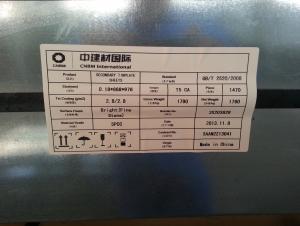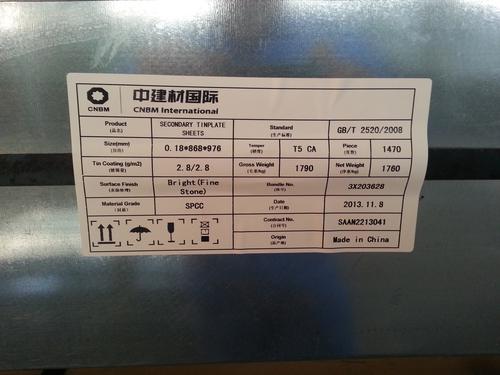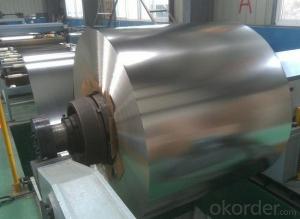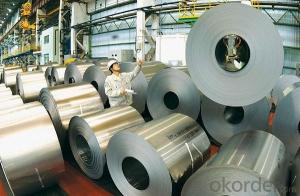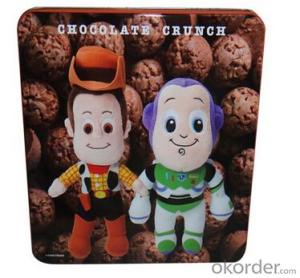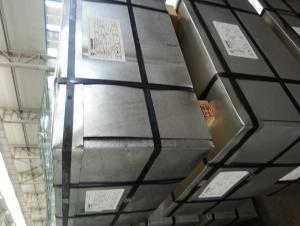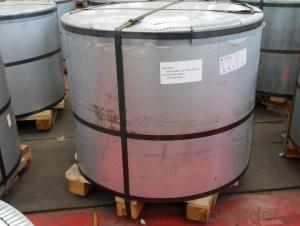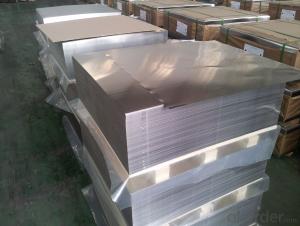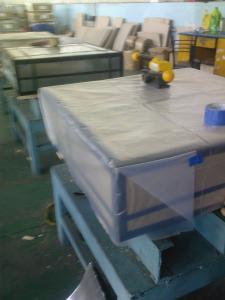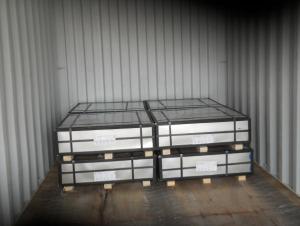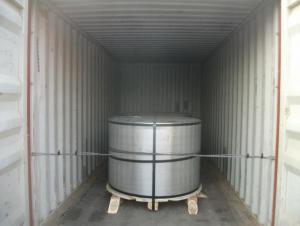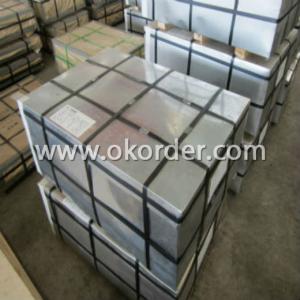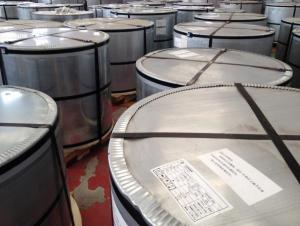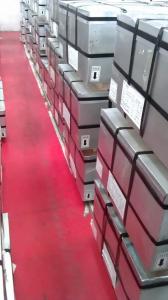Tinplate for Food and Chemical Cans, Container
- Loading Port:
- China main port
- Payment Terms:
- TT or LC
- Min Order Qty:
- 50 m.t.
- Supply Capability:
- 400000 m.t./month
OKorder Service Pledge
OKorder Financial Service
You Might Also Like
Prime Quality Tinplate Sheets Details:
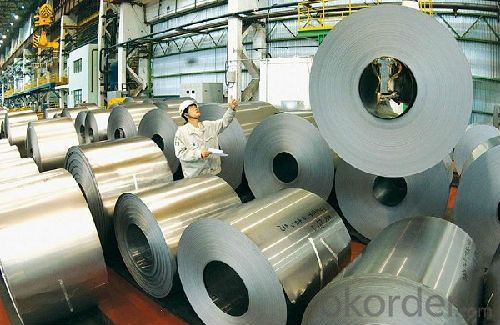
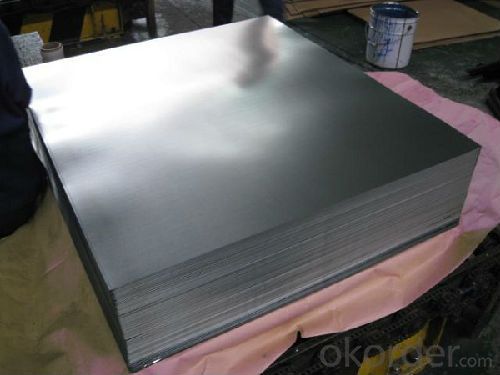
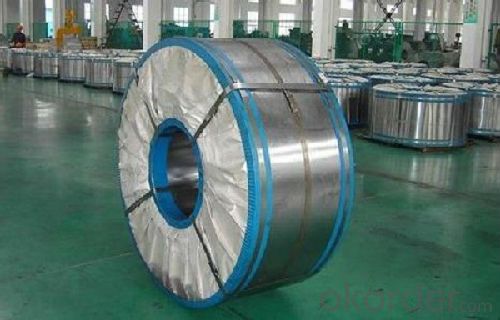
Minumum Order Quantity: 25 MT Loading Port:China Main Port
Annual Capacity: 400,000MT Payment Terms:TT or LC
| | | | | | |
| | | | | |
Product Description:
Prime Quality Tinplate Sheets Usage and Applications
Prime Quality Tinplate Sheets Specifications
Standard : GB2520-2000 ,JIS G3303
Steel type : SPCC
Coating : 2.8/2.8
Surface: Bright, Stone ,
Thickness:0.18
Width :600MM~1000MM
Temper : T1~T5
Package: tinplate wrapped completely with an inner cover of plastic or waterproof papers with vorners protected with metal angels.
Applications
Chemicals and painting cans
Dry food cans, such as fancy cans, biscuit cans, milk power cans, tea cans
Liquid food cans, such as edible oil cans, beverage cans, Tomato paste cans
Sea food cans
Crown corks, easy open ends(EOE)
Electrical machinery parts
Bakeware and household kitchen parts
FAQ
CNBM International Corporation
CNBM International Corporation, as an important import and export platform of CNBM Group, enjoys competitive advantages in importing and exporting of building materials as well as complete sets of machinery and equipments, engineering, and project contracting.
Factory Introduction
CNBM as one of the largest suppliers in tinplate industry, offers clientss prime quality tinplate in both coil and sheets. With multi-plants and fully integraded production, the annual capacity of tinplate is 400,000MT.
To ensure the high quality if the tinplate, CNBM owns complete equipment series.
- Reversing cold rolling machines: 14 sets
- Continuous rolling machines: 2 sets
- BA furnaces: 50
- CA line: 1
- Tinplate production line: 2
- SA& DA reduced tinplate sheet: Available
CNBM also produce other steel products, such as cold-rolled steel, hot dip galvanized steel, color coated steel and tin free steel coils and sheets.
- Q: What are the main suppliers of tinplate?
- The main suppliers of tinplate are major steel manufacturers, such as ArcelorMittal, Nippon Steel Corporation, Tata Steel, and JFE Steel Corporation.
- Q: How does tinplate contribute to the resistance of marine equipment?
- Tinplate contributes to the resistance of marine equipment by providing a protective coating that prevents corrosion and rusting. The tin layer acts as a barrier, shielding the underlying metal from the corrosive effects of saltwater and other environmental factors, thereby increasing the longevity and durability of the equipment in marine environments.
- Q: Is tinplate resistant to corrosion?
- Yes, tinplate is highly resistant to corrosion due to the protective layer of tin that is electroplated onto the surface of the steel.
- Q: How does tinplate contribute to the aesthetics of furniture?
- Tinplate contributes to the aesthetics of furniture by adding a unique and eye-catching element to its design. With its shiny and reflective surface, tinplate can create a modern and sophisticated look. It can be used for various decorative purposes, such as accents, inlays, or even as a complete surface finish, enhancing the overall visual appeal of furniture. Additionally, tinplate is versatile and can be easily shaped or embossed, allowing for intricate and detailed designs, further enhancing the aesthetics of furniture pieces.
- Q: What is the cost of tinplate compared to other packaging materials?
- The cost of tinplate is generally higher compared to other packaging materials such as aluminum, paper, or plastic. Tinplate is a durable and versatile material, but its higher cost is primarily due to the production process involving coating steel with a thin layer of tin. While other materials may offer a more cost-effective solution for certain applications, tinplate's unique properties and premium image make it a preferred choice for certain industries like food and beverages, cosmetics, and pharmaceuticals. Ultimately, the cost of tinplate should be evaluated in relation to the specific needs and requirements of the packaging project.
- Q: How does tinplate handle exposure to chemicals and solvents?
- Tinplate is known for its excellent resistance to chemicals and solvents. It forms a protective barrier that prevents the interaction between the metal and the substances it comes in contact with. This makes tinplate a reliable packaging material for various products, ensuring their quality and safety.
- Q: Can tinplate be used for electrical applications?
- Yes, tinplate can be used for electrical applications. Tinplate is a type of steel coated with a thin layer of tin, providing it with excellent corrosion resistance and electrical conductivity properties. This makes it suitable for use in various electrical applications such as printed circuit boards, electrical connectors, and electrical enclosures.
- Q: What are the factors that affect the cost of tinplate?
- The factors that affect the cost of tinplate include the price of raw materials, such as steel and tin, market demand and supply dynamics, production and manufacturing costs, transportation and logistics expenses, currency exchange rates, and any applicable taxes or tariffs. Additionally, fluctuations in global economic conditions and trade policies can also impact the cost of tinplate.
- Q: Can tinplate be used for coinage?
- No, tinplate cannot be used for coinage as it is not a durable or suitable material for minting coins.
- Q: What are the common safety features for tinplate packaging?
- Some common safety features for tinplate packaging include tamper-evident seals, child-resistant closures, and durable construction to prevent breakage or leakage. Additionally, many tinplate packaging products are also made with food-grade materials to ensure the safety of the contents.
Send your message to us
Tinplate for Food and Chemical Cans, Container
- Loading Port:
- China main port
- Payment Terms:
- TT or LC
- Min Order Qty:
- 50 m.t.
- Supply Capability:
- 400000 m.t./month
OKorder Service Pledge
OKorder Financial Service
Similar products
Hot products
Hot Searches
Related keywords
